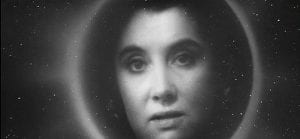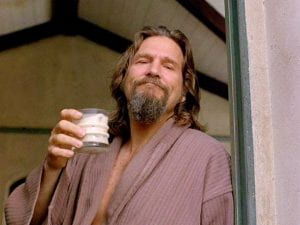
If I had to describe The Night of the Hunter (1955) in one word, it would be singular. There is simply no other film like it. It bears traces of influence from several different film movements and belongs to several genres, and it would go on to influence great films and filmmakers. But as a cinematic experience it is completely unique.
A look at The Night of the Hunter’s crew demonstrates how it came to be such a singular film. It is the only movie that Charles Laughton, a great British actor, directed. James Agee, a well-known novelist and film critic, wrote the screenplay. The only other notable feature film that he wrote the screenplay for was The African Queen. This writer-director duo would both cement The Night of the Hunter’s legacy as a film trivia question and as a film with a creative viewpoint like few others.

While the plot is interesting — two children try to escape Harry Powell, a misogynistic “preacher” who seeks the $10,000 that their father stole and gave to them before he was arrested — what really sets this film apart is its visual style. The filmmakers use striking angles and very dark shadows to accentuate their story’s frightening nature. Both of these techniques were hallmarks of German Expressionism, and a shot of a train bearing the villain barreling to town as black smoke erupts from it is strikingly similar to one from Alfred Hitchcock’s Shadow of a Doubt. But director Charles Laughton and director of photography Stanley Cortez make these visual elements feel unique to their story, and plunge whoever watches it into a nightmarish reality.

The Night of the Hunter was not a critical or a commercial success. But like many strange films from the 1950s it would receive a critical reevaluation. Francois Truffaut would write a mostly positive review of it. Andrew Sarris would use it as evidence for his version of the “auteur” theory. More importantly, young directors began to watch it and let it influence their work.
David Lynch appears to pay tribute to the film’s first shot, in which the benevolent Rachel Cooper (Lillian Gish) speaks against a background of stars, in the last shot of his film The Elephant Man. In addition, one of the film’s main themes — the presence of evil affecting quirky people — has influenced almost all of Lynch’s films as well as Twin Peaks. The song “Leaning on the Everlasting Arms” makes an appearance in some form in two Coen Brothers films, The Ladykillers and True Grit. The famous line “the Dude abides” from The Big Lebowski even owes a debt to the last line of The Night of the Hunter.
The Night of the Hunter remains a film that is ahead of its time — Laughton’s move from acting to directing a horror film is reminiscent of Jordan Peele’s, and its woman-hating villain feels unsettlingly timely. But The Night of the Hunter is also a film that feels out of time. The world that the filmmakers built feels rooted in the 1950s, but it also feels like it could have come from another dimension. To watch it is to feel like you’re being told a story while sitting around a campfire as the cold wind blows and the leaves softly rustle. That makes it, amongst other things, a singularly perfect film to watch in October.
Although part of IU Cinema’s City Lights Film Series, The Night of the Hunter will be shown at the IU Moving Image Archive Screening Room in the Herman B Wells Library on October 20th at 4 pm. This screening is free, but reservations are required and can be made here.

Jesse Pasternack is a graduate of Indiana University. During his time at IU, Jesse was the co-president of the Indiana Student Cinema Guild. He also wrote about film, television, and pop culture for the Indiana Daily Student. Jesse has been a moderator at Michael Moore’s Traverse City Film Festival and is a friend of the Doug Loves Movies podcast. An aspiring professional writer-director, his own film work has appeared at Campus Movie Fest.

